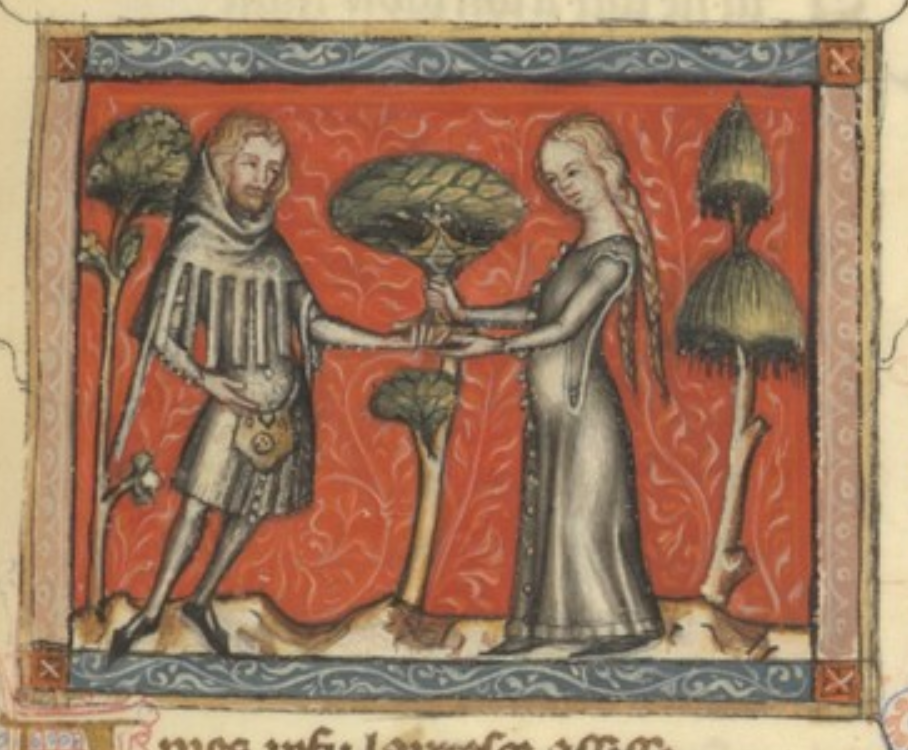Gothic Dagges...or Dags...or Dagging
While digitizing some of the patterns I have for garments, I decided to make a quick blog post to accompany this new addition to the pattern archive.
Dagges (or dags, or dagging) is an easy way to embellish your garments. They are essentially shapes cut into the edges of a garment. Dagges can be added to hoods, cloaks, hems, sleeves, etc. Below are just a few of the possibilities for styles and shapes that were seen in the fourteenth and fifteenth centuries. You can download my full-size templates for them from the pattern archive.
Vertical cuts
These are the simplest dagges to add to your garment. All you need to do is choose how deep and frequent to make your cuts. I find it easiest to mark the placement directly on the garment with tailor's chalk and then cut with my scissors.
Two men in the audience wearing hoods with vertical cut dagges. From Chroniques de France ou de St Denis, The British Library, Royal 20 C VII, f. 134v.
Feathering
This style is also very fast to make and creates wonderful fluttering edges. It is all straight cuts into the garment at various angles and no fabric is removed. You choose how deep and close together these cuts are made to vary the effect.
A man wearing a hood with feathered dagges. From Roman de la Rose, Bibliothèque nationale de France, 1567, f7r.
Feathered dagges on a hood. You can still see some of the chalk marks I made as a guide. :-)
An example of the cut lines for feathered dagges.
Embattled
Made using straight cuts, but because fabric is removed from the hood it creates a wider spacing and a more prominent appearance that just vertical straight cuts.
Detail from the Execution of Pierre de la Brosse showing a man wearing a hood with wide embattled dagges. From Chroniques de France ou de St Denis, The British Library, Royal 20 C VII, f. 134v.
Another example of embattled dagges, but these are longer and narrower. From Roman de la Rose, Bibliothèque nationale de France, 1567, f7r.
Scallops
A versatile shape that is seen on hoods as well as other garments.
Scalloped dagges on both hoods and body garments. From Bibliothèque de l'Arsenal, Ms-664 réserve, f31v.
Ovals
The simpler cousin of the oak leaf.
Man wearing a cote with oval shaped dagges on the bottom hem. From Tacuinum Sanitatis, Bibliothèque nationale de France, NAL 1673, 85r.
Oak Leaves
Creates a fancy look and can be small or large. Cut like an oval, but with the addition of knobs along the edges to give the oak leaf shape. You can see this style of dagging in action here.
Man with oak leaf dagging along the hems, sleeves, and shoulders of his garment. From Tacuinum Sanitatis, Bibliothèque nationale de France, NAL 1673, f83r.
Example of a hood with oak leaf dagges.
